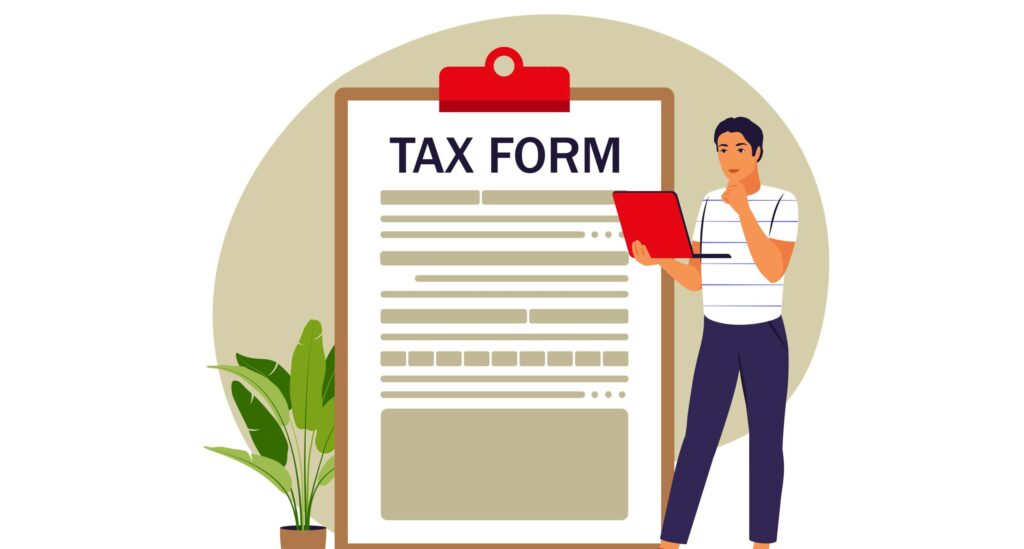Self-assessment is used by HM Revenue and Customs (HMRC) in the UK to collect income tax. It requires individuals to report their income, gains, and any applicable reliefs or allowances, enabling the calculation of their tax liability.
Entering the realm of Self-Assessment Tax Returns can be a daunting task for many individuals. However, understanding the key aspects of this process can make it more manageable.
In this article, we’ll explore eight crucial things you need to know about Self-Assessment Tax Returns to ensure a smooth and stress-free experience.
1.Filing Self-Assessment Tax Return
Under the self-assessment system for individuals, the onus is placed on the taxpayer to provide the information to calculate their tax liability. The tax return covers income tax, class 2 and class 4 NICs and capital gains tax (CGT) liabilities for the year.

Determining whether you are required to file a Self-Assessment Tax Return is crucial. Generally, self-employed individuals, company directors, high earners, and those with complex financial affairs are required to submit a Self-Assessment.
2.Key Deadlines
Understanding the deadlines for filing your Self-Assessment Tax Return is crucial to avoiding penalties. Different deadlines exist for filing paper and electronic (online) returns.
The deadline for online submission is typically 31 January following the end of the tax year, while the paper submission has an earlier deadline of 31 October following the end of the tax year.
Payment of the tax must be made by 31 January following the end of the tax year to which it relates. Interim payment in account for the income tax and class 4 NIC may be required on 31 January in the tax year and 31 July following the tax year for certain taxpayers.
3.Income source to consider
Self-assessment requires a comprehensive review of various income sources. This includes:
- earnings from employment
- self-employment income
- rental income
- capital gains
- dividends
- foreign income and
- other forms of income
Identifying and reporting all applicable income streams is essential for accurate tax calculations.
4.Keeping Accurate Records
Taxpayers are required to keep and preserve records necessary to make a correct and complete return. Maintaining meticulous records of your income, expenses, and any relevant documentation is vital for a hassle-free Self-Assessment process. Well-organised records help ensure accurate reporting and can serve as valuable evidence in case of an audit.
5.Claiming Allowances and Deductions
There are many allowances and allowable deductions in respect of your income that you include in the Self-Assessment tax return. So, understanding the allowances and deductions available to you can significantly impact your tax liability.

Ensure that you are aware of the reliefs and allowances relevant to your circumstances, such as the Personal Allowance, Marriage Allowance, and expenses related to self-employment.
6.Payment on Account
If the taxpayer had an Income Tax liability in the previous tax year in excess of any tax deducted at source, a POA is normally required for the following year. But there are exceptions to it, and the exceptions are:
- Total tax liability (i.e. income tax plus class 4 NICs) less PAYE for the previous tax year is less than £1,000 or
- More than 80% of the total tax liability (i.e. income tax plus class 4 National Insurance Contribution NICs) for the previous tax year was met by deduction of tax at source.
Due dates for POAs for 2022/23 is 31 January 2023 for first installment and 31 July 2023 for second & final installment.
Any remaining liability is then settled on the balancing payment date – 31 January 2024. Failing to account for required payments on account can lead to unexpected financial challenges.
7.Penalties for Non-Compliance
HMRC imposes penalties for late or incorrect submissions. Being aware of the potential consequences can motivate timely and accurate filing. Penalties can accrue daily, making it crucial to adhere to deadlines and provide accurate information. Penalties can be as high as 100% and as low as 0% if you made a genuine mistake without knowing.
8.Compliance Checks and Discovery Assessments
HMRC have the right to enquire about the completeness and accuracy of any self-assessment tax return under their compliance check powers. It can be made if they have a suspicion that income is undeclared by the taxpayer, has incorrectly claimed deductions, or is part of a random review process.
HMRC must normally begin compliance checks within 12 months of the date the return is filed. However, a discovery assessment can be raised at a later rate (up to 20 years) to prevent the loss of tax.
Conclusion
It takes initiative and a thorough understanding of the procedure to navigate the complexities of self-assessment tax returns. You may ensure compliance with HMRC regulations and expedite the tax filing process by being acquainted with these eight crucial points discussed above.
Considering the complexities of the tax system, getting expert help from tax professionals is beneficial. They help you to minimise liabilities, maximise your allowances, and handle the complex elements of the self-assessment tax return.
Recall that conducting your self-assessment successfully and stress-free requires being proactive, keeping correct records, and getting professional help when necessary.